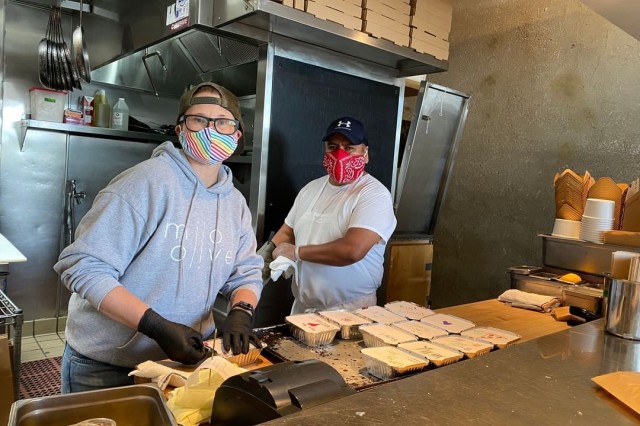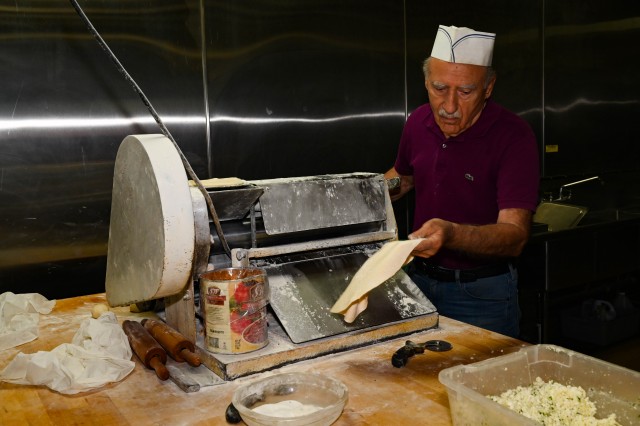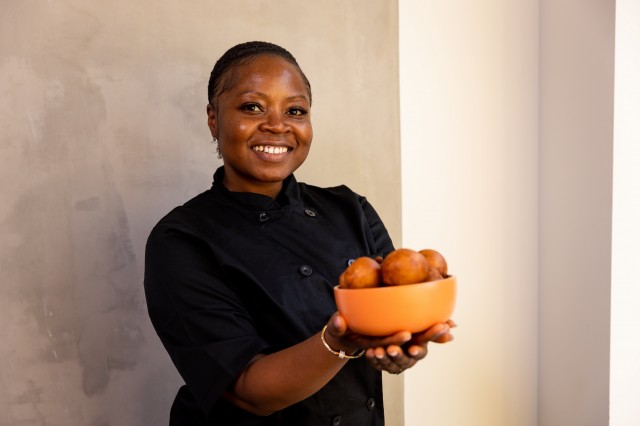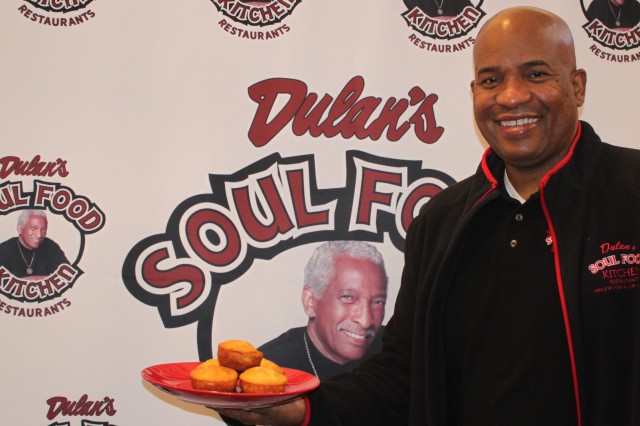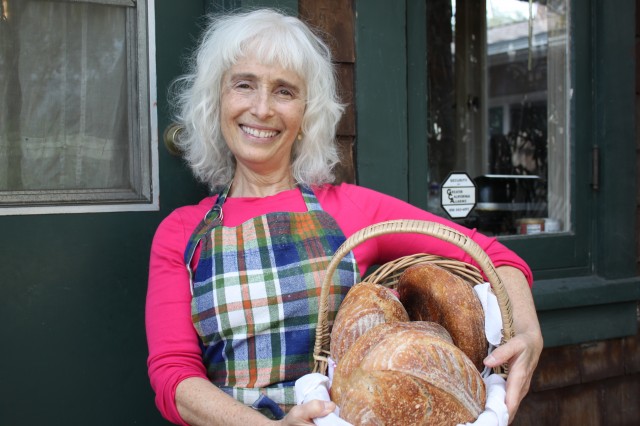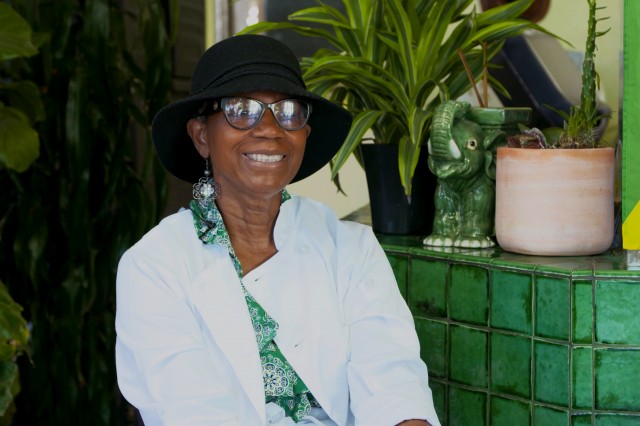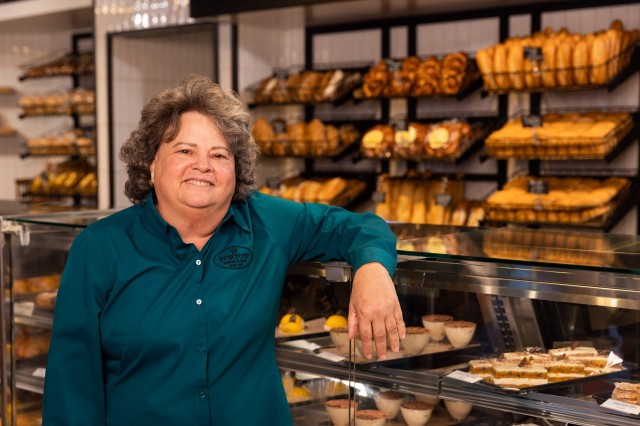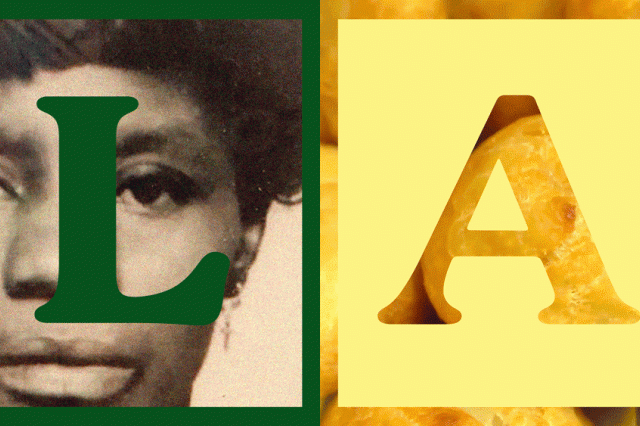
Bánh Mì Rolls, a Cross-Cultural Bread
Ali Huynh | Kien Giang Bakery
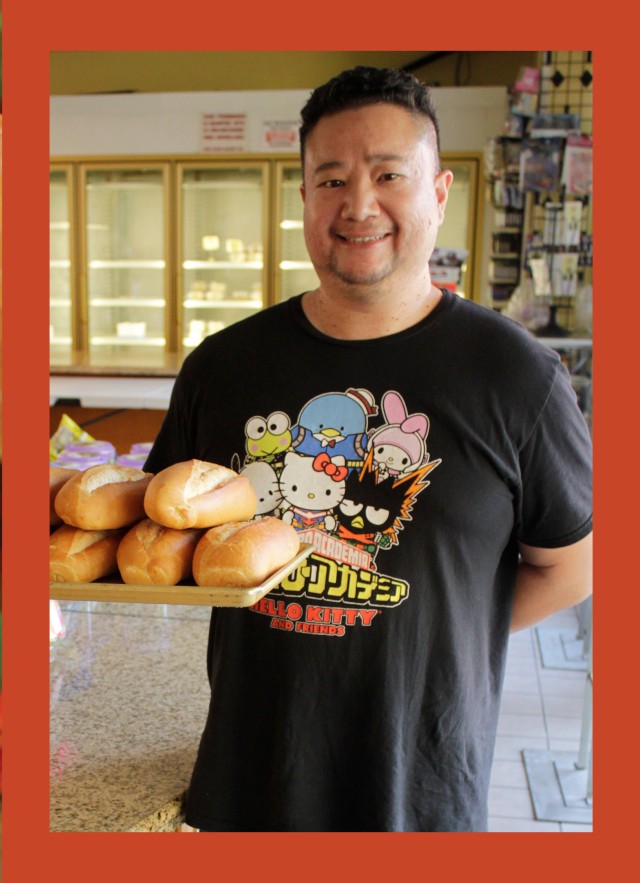
Kneaded: L.A. Bread Stories, celebrates L.A. history, heritage, and communities through the lens of bread.
In an interview with Ali Huynh, second-generation baker at Kien Giang Bakery in Echo Park, we learn about the blended cultural history of bánh mì rolls, his family’s journey to Los Angeles, and how the bánh mì roll crosses cultural boundaries.
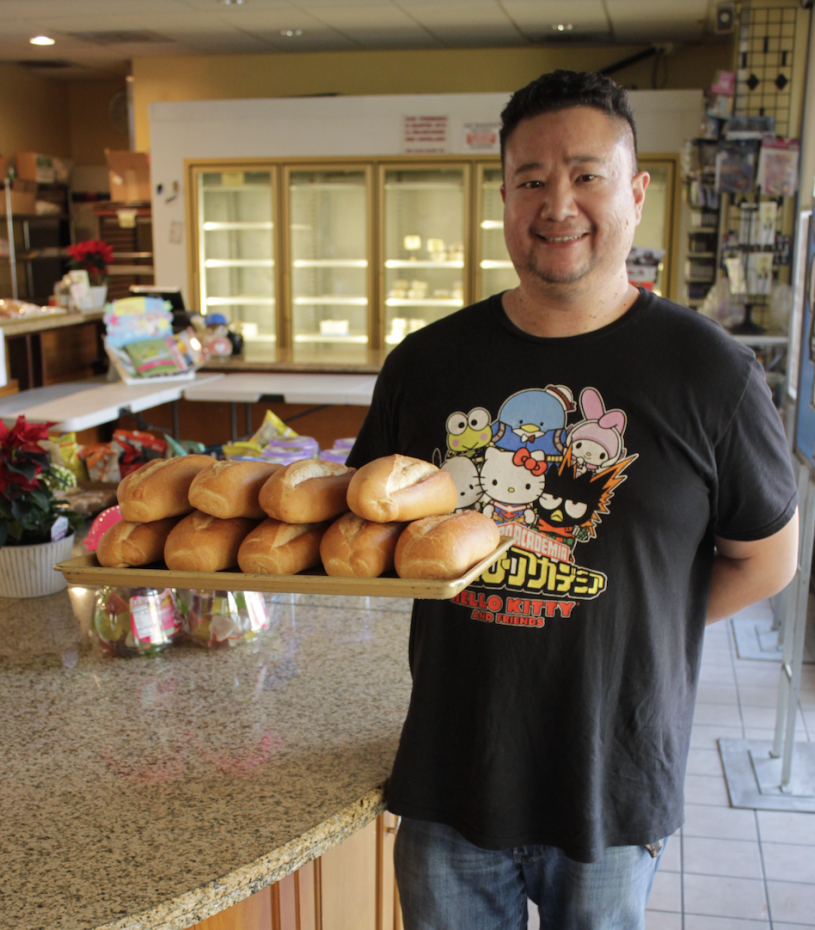
So people call it whatever they are familiar with–some call it bolillo, some call it pan. But people always tell me that it reminds them of home, of bread back home, which is interesting because of the way we do it reminds us of our homes.
Ali Huynh
What inspired your family to settle in Los Angeles and open a bakery?
My family were refugees from Vietnam and came to America with not a whole lot of money or things; they had to come and make a life for themselves. My dad was about 30 years old when he came [to L.A.], and my mom was 25 years old. My oldest sister was three years old, and my other sister was a few months old. I wasn't even born yet! [They traveled here with] my grandfather, who was a fisherman in Vietnam and famous for his fish sauce. He worked and saved money to buy a house—this was all in the early 1970s.
In the 1970s, Chinatown had a lot of Chinese people and Chinese-owned businesses, as well as Vietnamese businesses. My family wanted to be with people like themselves, so they bought a house in Echo Park, which is really close to Chinatown. They started Kien Giang in the 1980s and in 1986 bought the location we are in today. My parents felt comfortable here, so we just stayed here in Echo Park.
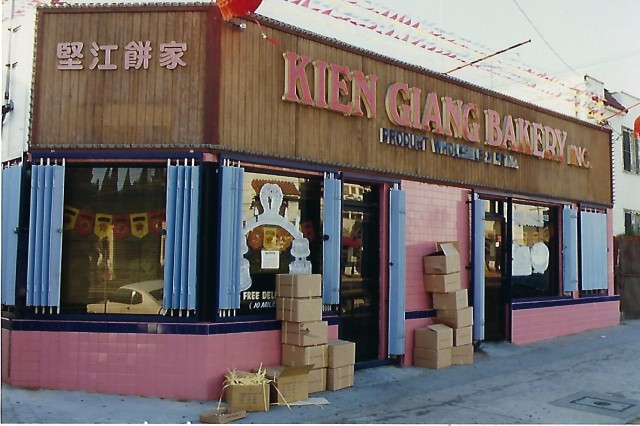
The original Kien Giang Bakery storefront in 1989.
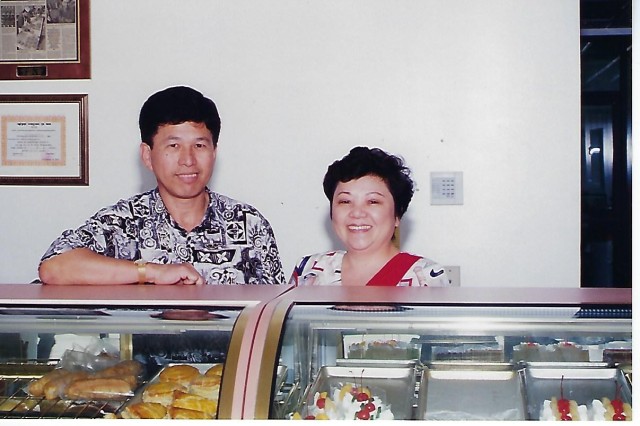
Ali’s parents and the founders of Kien Giang Bakery, Quang Van Huynh and Len Kim Phu in 1995.
1 of 1
The original Kien Giang Bakery storefront in 1989.
Ali’s parents and the founders of Kien Giang Bakery, Quang Van Huynh and Len Kim Phu in 1995.
At the beginning, they made rice cakes and mooncakes, but over time their main product evolved into birthday cakes. Since there were few Asian people [in L.A.], they drove out past Chinatown and into Orange County to deliver to all the markets. Being immigrants who had just arrived in America—who didn’t speak English—they had to work [and seek out] the people they were used to and make food that reminded them of home.
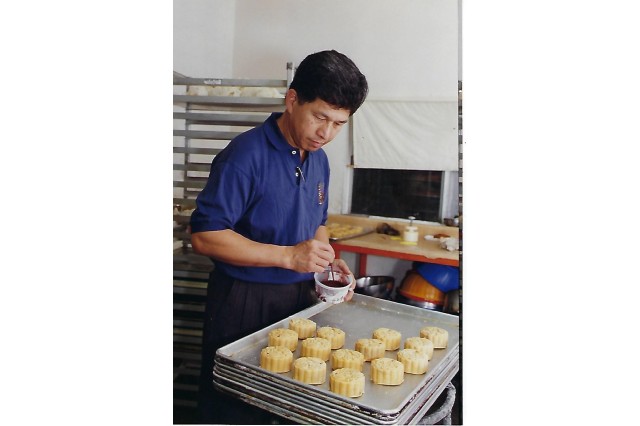
Quang Van Huynh, co-founder of Kien Giang Bakery, making mooncakes in 1993.
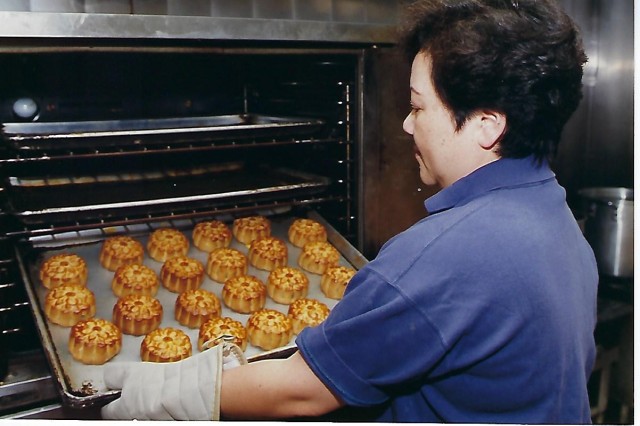
Len Kim Phu, co-founder of Kien Giang Bakery, making mooncakes in 1993.
1 of 1
Quang Van Huynh, co-founder of Kien Giang Bakery, making mooncakes in 1993.
Len Kim Phu, co-founder of Kien Giang Bakery, making mooncakes in 1993.
How did you get started making bánh mì rolls?
We needed a daily item, something that makes customers come every day—but also wanted a bread that was able to appeal to multiple communities. The neighborhood dynamics changed [in Echo Park] because most of the Asian people moved away, and they were the customers who would buy our cakes. Since people do not buy a birthday cake every day, we started making [bánh mì rolls].
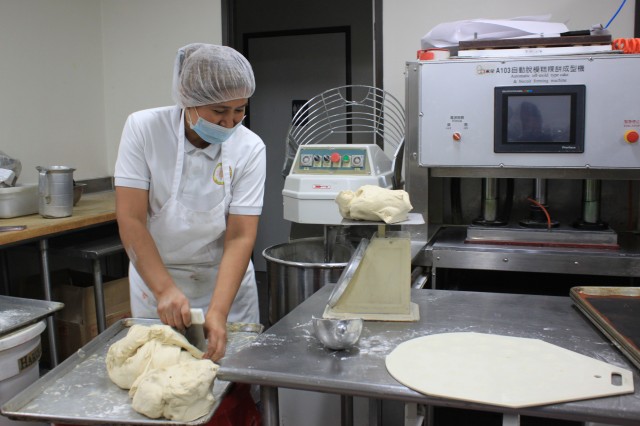
Baker, Blanca Urbano has worked at Kien Giang Bakery for more than 30 years and is an expert at making bánh mì rolls. Pictured here, she ensures that the right amount of dough is prepared to be shaped into the long oval shape.
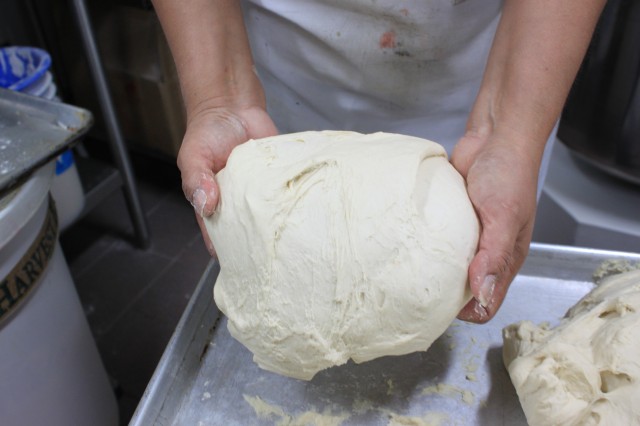
Kien Giang Bakery prepares dough weekly to ensure their bread is fresh and available to community members who stop by the bakery.
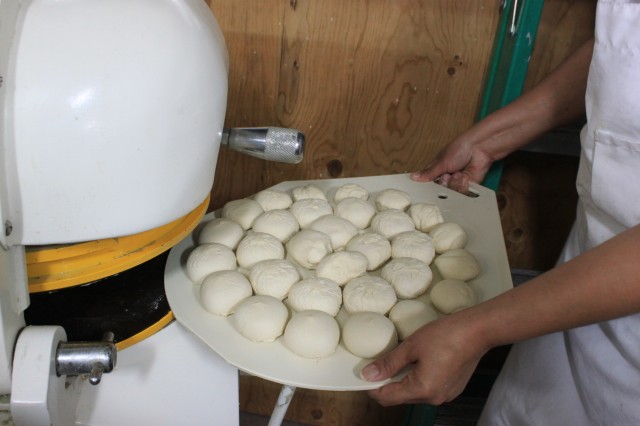
The bakery uses a dough rounder to ensure their dough is prepared to standard.
1 of 1
Baker, Blanca Urbano has worked at Kien Giang Bakery for more than 30 years and is an expert at making bánh mì rolls. Pictured here, she ensures that the right amount of dough is prepared to be shaped into the long oval shape.
Kien Giang Bakery prepares dough weekly to ensure their bread is fresh and available to community members who stop by the bakery.
The bakery uses a dough rounder to ensure their dough is prepared to standard.
Tell us about the communities you serve.
In the early 1980s, the neighborhood was mostly Latino Americans and Asian Americans. As time passed, they started moving out of the neighborhood and in came all kinds of different people. The community is a melting pot here, and it’s cool because all these different people like our bread. So people call our bánh mì rolls whatever [name] they are familiar with—like bolillo or pan—but what people always tell me is that it reminds them of bread back home. And that is really wonderful because the way we make it reminds us of our homes.
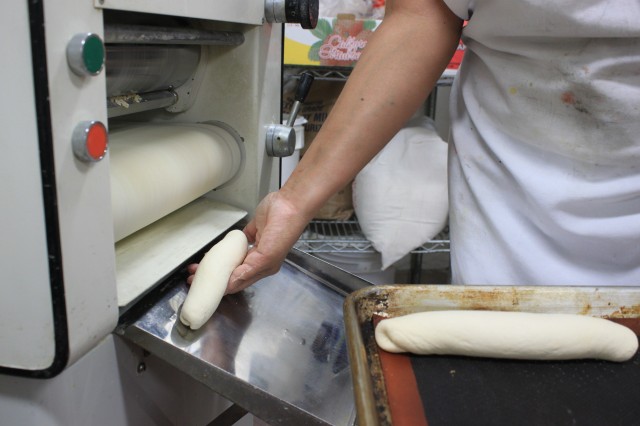
Kien Giang Bakery uses some special tools to help their bakers keep up with the demand. This machine rolls out the dough into long ovals.
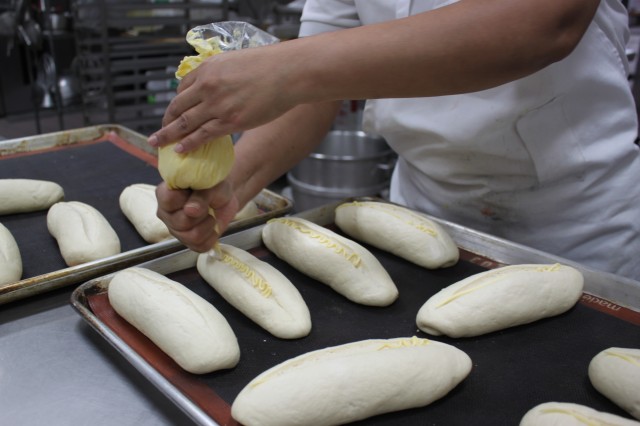
Before going into the oven, the dough gets toped with a mixture of butter and other secret ingredients.
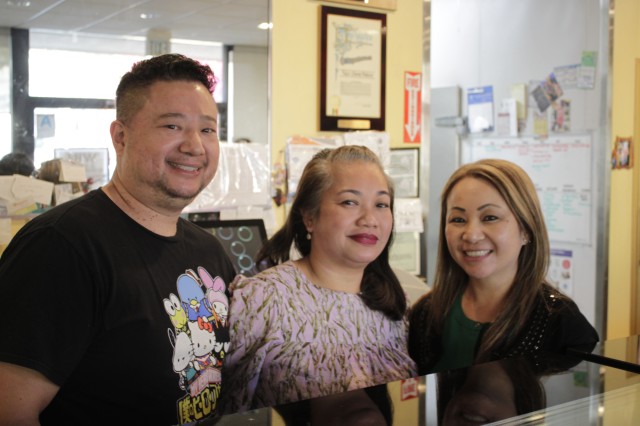
The Kien Giang family is always at the bakery. Pictured here is Ali, Debbie, and Jennifer Huynh (left to right).
1 of 1
Kien Giang Bakery uses some special tools to help their bakers keep up with the demand. This machine rolls out the dough into long ovals.
Before going into the oven, the dough gets toped with a mixture of butter and other secret ingredients.
The Kien Giang family is always at the bakery. Pictured here is Ali, Debbie, and Jennifer Huynh (left to right).
How have bánh mì rolls evolved from their French roots?
Bánh mì rolls are nothing like French bread, which has a dense crust, chewy interior, and a big crumb structure. Vietnamese bread isreally light, crispy, and flaky versus French bread, which can be really hard—you could knock someone in the head with it. Bread evolves with the type of ingredients we use, and the temperature and humidity of the area. I could not make the bread the same as they do over in Vietnam because of the different temperature and humidity—which really makes a difference!
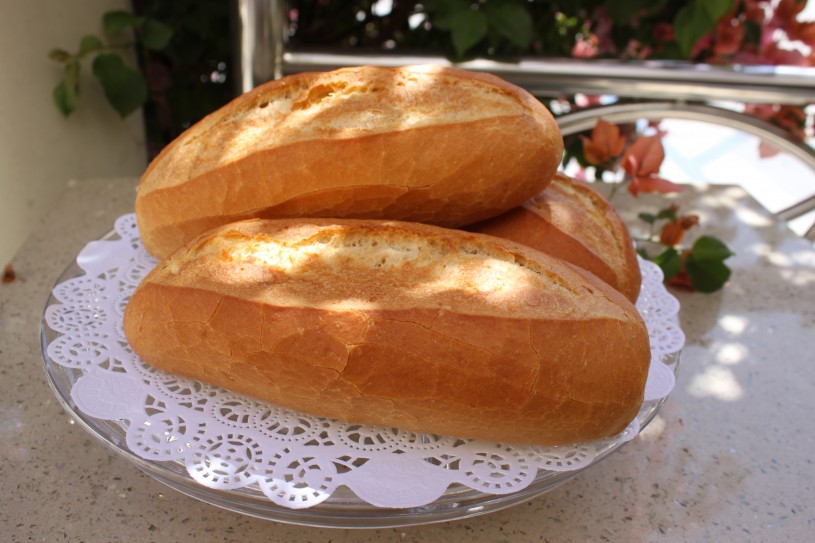
What memories or emotions arise while making bánh mì rolls?
Making bánh mì rolls reminds me of street vendors in Vietnam—selling bánh mì and sugar cane drinks on the street—just like the fruit stands here in L.A. After college, I went back to Vietnam with my parents and at that time, there weren’t many cars on the road—mostly people on bicycles wearing traditional clothes. I loved this because it made me feel like I was back in time, like how my parents grew up. When I was there, I ate a lot of bánh mì and a lot of bread from street vendors. So this is what I picture when I make this bread—people selling bread at every street corner in Vietnam.
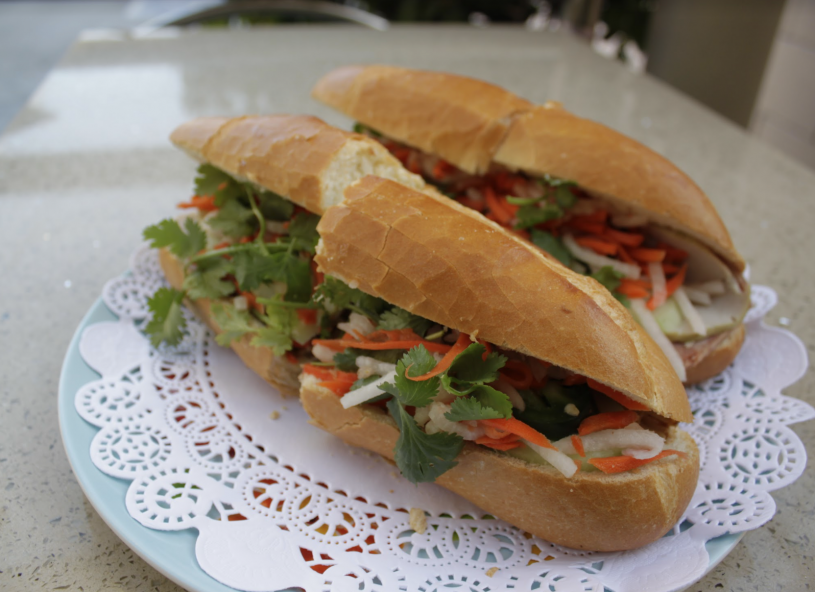
What’s your favorite part about making bánh mì rolls?
My wife’s favorite step is when the bread comes out of the oven. She loves to see the bread steaming and cracking—you can actually hear it cracking and then see the crust cracking. My favorite part is the forming of the bread.
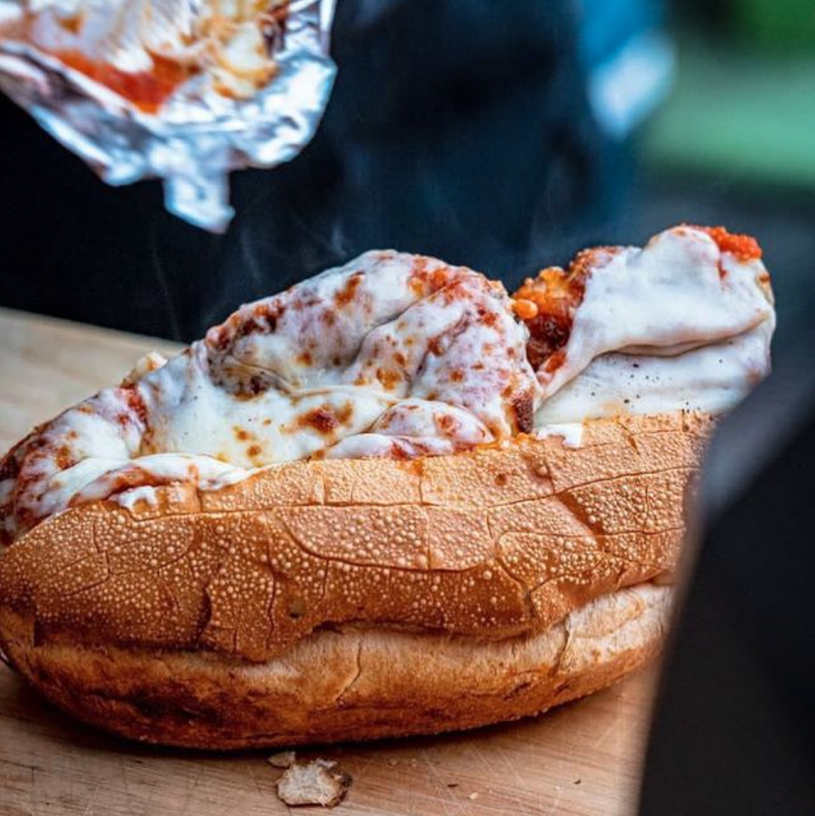
How do you think the bánh mì rolls you make bring people in the community together?
What I really like about making the bread is that the customers would come in and tell me, “this is the best bread I ever had,” or “this bread reminds me of home.” What is interesting is that our bread reminds folks of something they can’t quite place, but it is associated with a fond memory—which is the coolest thing for me! I love sharing our bread with other cultures and communities, and seeing how it makes them so happy. Also our bread is something that people can come and get every day since it is cheap!
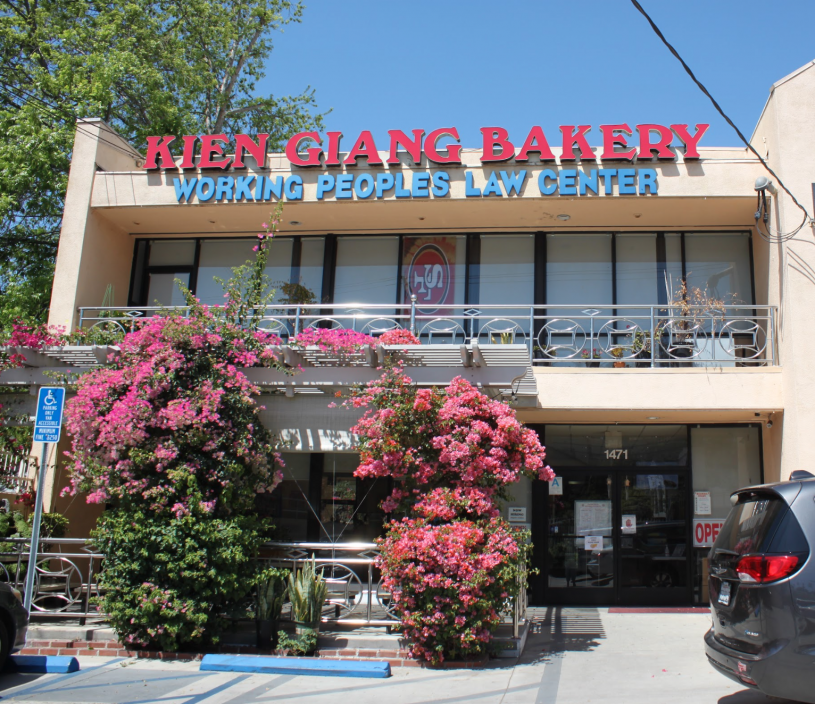
EXPLORE MORE FROM KIEN GIANG BAKERY
To see what’s baking at Kien Giang Bakery check out kgbakery.com or visit them at 1471 Echo Park Avenue, Los Angeles, CA 90026.
SHARE YOUR L.A. BREAD STORIES
Do you know an L.A. breadmaker who lovingly connects to your community? Do you want to share your favorite experience at Kien Giang Bakery? Join the conversation by tagging @NHMLA with #KneadedLA, and your story could be featured next!
Following the success of Kneaded: L.A. Bread Stories, we're celebrating the history, heritage, and communities of Los Angeles through the lens of different cultural traditions. This year, L.A. at Play highlights the vibrant and visionary work of artisans who fabricate dolls and figurines using a variety of techniques and materials.
Explore more Kneaded: L.A. Bread Stories

